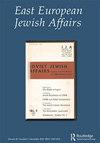Testimony in Place: Witnessing the Holocaust in Belarus
IF 0.2
4区 哲学
Q2 HISTORY
引用次数: 0
Abstract
ABSTRACT Holocaust killing sites in Eastern Europe are of increasing interest to scholars and the public. This article analyzes the production of video testimonies in situ to consider the question of witnessing the Holocaust in Belarus, where mass graves of Jews are at once ubiquitous and invisible. Foregrounding the French organization Yahad–In Unum's efforts to identify and memorialize these killing sites, the article proposes a spatially aware reading of the audio-visual historiography produced in the former Pale of Jewish settlements. Place here functions as both a trigger of memory and a reminder of the nature of the genocide in Belarus as embedded in a larger context of violence and destruction. Confronted with a unique set of spatial parameters, viewers of these video testimonies are exposed to the legacies of the atrocities in the present and encouraged to develop an understanding of the Holocaust that recognizes its social and environmental repercussions.就地作证:目睹白俄罗斯的大屠杀
东欧大屠杀屠杀遗址越来越受到学者和公众的关注。本文分析了现场视频证词的制作,以考虑在白俄罗斯目睹大屠杀的问题,在那里,犹太人的乱葬坑无处不在,看不见。为法国组织Yahad——在Unum识别和纪念这些杀戮地点的努力中,文章提出了对前犹太定居点Pale产生的视听史学的空间意识解读。这里的位置既是记忆的导火索,也是对白俄罗斯种族灭绝性质的提醒,因为它植根于更大的暴力和破坏背景中。面对一组独特的空间参数,这些视频证词的观众会接触到当前暴行的遗产,并被鼓励对大屠杀产生认识,认识到其社会和环境影响。
本文章由计算机程序翻译,如有差异,请以英文原文为准。
求助全文
约1分钟内获得全文
求助全文

 求助内容:
求助内容: 应助结果提醒方式:
应助结果提醒方式:


